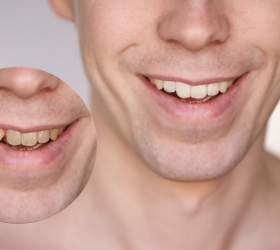As it’s so simple to open the tap and fill a cup with the cold, pure liquid, most people take water for granted. Last October, the water treatment system in Blackstone, MA, worth $8.5 million, was officially inaugurated.
But there may be occasions when access to clean water is not that simple. Knowing how to create a water treatment system is handy in such circumstances.
Materials required:
- Bottle made of plastic or another similar food-safe container
- Additional clean water container
- cheesecloth or clean cotton
- a porous fabric or coffee filter
- Graphite Sand (fine and coarse)
- Marbles or gravel
Step 1: Remove the bottom
Cut off the bottom of the bottle that will hold the filter material using scissors or a knife.
Step 2: Cut a drain hole
Make a tiny hole in the cap using a pair of scissors or a knife. If there is no cap, cut off the top of the bottle rather than the bottom as in the previous step, and then pierce it with multiple tiny holes.
The first layer in Step 3: Straining Fabric
Fill the bottle’s bottom with the most delicate cloth or linen fabric, such as cotton stuffing, cheesecloth, or a coffee filter. This initial phase can also include the usage of grass and sand.
To filter out bigger particles and give water a pleasant taste from chlorophyll present in the grass, fill the bottom of the container with about three inches of grass clippings. Then add three to four inches of extremely fine sand.
Step 4: Break up the charcoal
Use hammering or rock to crush the charcoal into the tiniest pieces possible. Never use a match or rapid light charcoal because it is drenched in chemicals.
Layer 2: Pulverized Charcoal, step 5
Three inches or so of ground charcoal should be added to the bottle. Cover with another filter funnel if one is available to stop the charcoal from being too displaced while filtering.
Third Layer, Step 6: Fine Sand
The finest sand you can find should be layered for 2 to 3 inches. You will add other layers after this one to filter out any remaining impurities in the water.
Fourth Layer, Step 7, Coarse Sand
Add a layer of coarse sand or tiny stones 2-3 inches thick.
The fifth layer, Step 8: Fine Sand
Add another layer of fine sand, about 2-3 inches thick. Most of the water’s impurities are captured by multiple filter stages with differing filtration rates, such as those found in a reverse osmosis system.
Step 9 – Gravel (6th Layer)
To stop the sand from being moved by the water being poured in, add a 2-3 inch layer of gravel or tiny rocks.
Step 10: Top strainer
A layer of porous material, such as a bandana or cheesecloth, covers the filter’s top. This extra step prevents the pouring from moving the sand inside the filter and helps strain out any big debris from the water.
You can now hold the filter over the second bottle and slowly pour water into it.
The water still must be disinfected even after being filtered through numerous layers since microorganisms can still be present there. The simplest method is to boil water in a saucepan or kettle.
Even though you can set up a filtration system at home, you should opt for professional water treatment systems in Blackstone, MA.
Get the best service and fix for water filtration.




